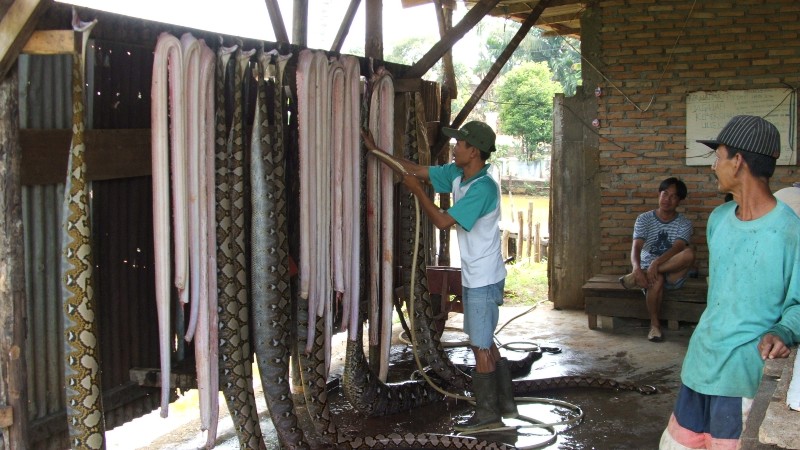Research suggests illegal trade in reptile skins could be rife

Analysis of nearly a decade’s worth of research has found widespread discrepancies between the number of snake skins legally traded and properly reported and the actual number of snakes being killed, suggesting widespread illegal trading.
The trade in wild animals and their parts has come under closer scrutiny in recent years, partially because of the reported links between wildlife markets and the emergence of Covid-19.
A significant part of the trade in wildlife is regulated, either through domestic legislation or via international treaties such as the Convention on International Trade in Endangered Species of wild fauna and flora (CITES). But in some cases it is unclear if these rules are being adhered to and whether all trade is legal.
Blood pythons could be being traded illegally
Vincent Nijman, Professor in Anthropology at Oxford Brookes University, published his analysis in the Nature Conservation journal, after scrutinising research conducted over almost a decade.
Blood pythons, named so because of their blood red markings, are traded for their skins which are then used for the production of items such as leather bags and shoes. Live blood pythons are also traded in smaller numbers to be kept as exotic pets.
Professor Nijman said: “By comparing the numbers we see reported in international trade, records from individual snake slaughterhouses and provincial harvest quotas, it is evident that there is a substantial underreported, and potentially illegal, trade in blood pythons.
“It appears that quite some time before the end of the year, the slaughterhouses have received their maximum number of blood pythons, yet the trade continues.”
One practical problem with assessing whether or not the harvest is within set, sustainable, limits is that most of the data available comes from slaughterhouses.
Commenting on the paper, Dr Chris Shepherd, expert on wildlife trade and Executive Director of the Monitor Conservation Research Society, said: “Despite decades of commercial trade in blood pythons from Indonesia, during which hundreds of thousands of python skins were exported, there is hardly any data on the health of the populations of these snakes in the wild.”
How can trading be regulated?
It is hoped that one of the outcomes of the study is that importers re-evaluate their supply chain to ensure all of the trade in blood pythons is legal and sustainable. It is also hoped that the authorities in blood python range countries, such as Indonesia, do more to ensure that harvest levels do not exceed agreed levels.
The paper ‘Harvest quotas, free markets and the sustainable trade in pythons’, is published in Nature Conservation.
(Image credited to Professor Vincent Nijman)
